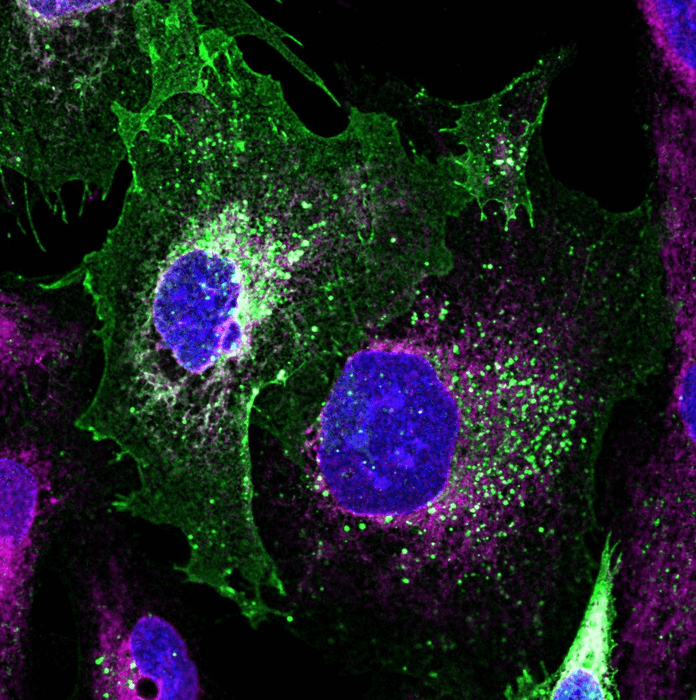In this new study, the international team described how they created a DNA repair agent to genetically correct defective podocin, a common genetic cause of steroid-resistant hereditary kidney disease (SRNS).

Genetic mutations that cause a debilitating genetic kidney disease that affects children and young adults have been repaired in patient-derived kidney cells using a potentially revolutionary DNA repair kit. An assay was developed by scientists at the University of Bristol and published in Nucleic Acids Research.
In this new study, the international team described how they created a DNA repair agent to genetically correct defective podocin, a common genetic cause of hereditary steroid-resistant nephrotic syndrome (SRNS).
Podocin is a protein that is normally found on the surface of specialized kidney cells (podocytes) and is essential for kidney function. But damaged podocin remains stuck inside the cell and does not reach its surface, causing terminal damage to the podocytes. The disease cannot be cured with drugs, but gene therapy that corrects the mutations that cause the defective podocin may offer hope to patients.
Human viruses are commonly used in gene therapy applications to perform genetic corrections. They are used as "Trojan horses" to enter the cells that carry the errors. The dominant systems today are LV, AV, and AAV, which are all relatively harmless viruses that easily infect humans. But all these viruses have the same limitation: they are limited by the small volume of their viral envelope. This limits the amount of cargo they can carry, i.e. the length of the DNA set that is necessary for effective genetic repair, and this significantly limits the scope of their application in gene therapy.
By using synthetic biology techniques, the team led by Dr. Francesco Aolicino and Professor Imra Berger from Bristol's School of Biochemistry re-engineered Colovirus, a harmless insect virus that is no longer limited by a small payload capacity.
"What distinguishes the baculovirus from LV, AV and AAV is the lack of a hard envelope that limits the size of the cargo," said Dr. Aolichino, who led the study. The envelope of the baculovirus is similar to a hollow stick — it simply lengthens as the charge increases. This means that a much more sophisticated toolkit can be brought to repair a gene damaged by the baculovirus, and is therefore more versatile than the common kits.
First, the baculovirus must be equipped with the ability to penetrate human cells, which it does not normally do. "We decorated the baculovirus with proteins that allowed it to enter human cells very efficiently," explained Dr. Aolichino. This modified baculovirus is considered safe because it can only reproduce in an insect, but not in human cells. The scientists then used the re-engineered baculovirus to bring much larger pieces of DNA than previously possible, and integrate them into the genomes of a whole range of human cells.
The team used patient-derived podocytes carrying the disease-causing error in their genome to show the capability of their technology. By creating a DNA repair kit, which includes protein-based scissors and the nucleic acid molecules that guide them - and the DNA sequences to replace the damaged gene, the team used one engineered baculovirus to bring a healthy copy of the podocin gene adjacent to the 9CRISPR/Cas mechanism and insert it precisely of a pair of bases into the genome. This made it possible to reverse the phenotype that caused the disease and return podocin to the cell.
More of the topic in Hayadan:
- Researchers at Tel Aviv University have identified the mechanism that causes the death of neurons in familial dysautonomia - and are offering a first-of-its-kind treatment
- Designing clinical trials with a patient-oriented approach
- "Mini Brain" helps to treat a rare and incurable brain disease in childhood

3 תגובות
Every week a new publication whose purpose is to extract money from taxpayers or private investors..the implementation, always, in 20 years..and then it is forgotten and only raises false hopes...since penicillin they have not discovered anything significant! Even though it is felt as if everything is progressing..illusions!
The age of Messiah, a world of redemption, without diseases, can cure genetic diseases. Amazing.
Amazing science fiction on earth